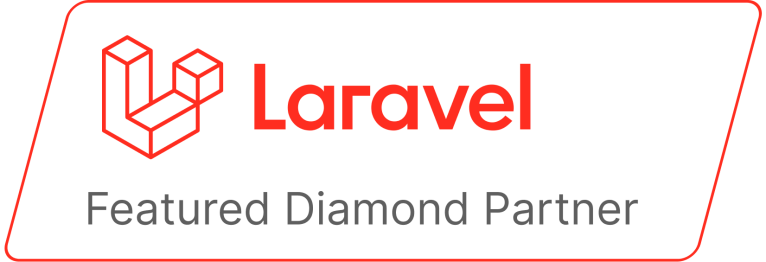Laravel Statamic Development for Modern CMS
We develop Statamic CMS for Laravel teams—flexible content management with flat-file storage, headless capabilities, and integration with existing Laravel applications.



👋 Talk to our Statamic team.

Trusted and top rated tech team







Statamic for Laravel-native content management
Our capabilities include:
- Statamic site development & configuration
- Custom content blueprints & field types
- Headless CMS with REST & GraphQL APIs
- Flat-file or database architecture setup
- Custom add-on integration & development
- Statamic to Laravel application integration
Who we support
Statamic fits Laravel teams that need content management without WordPress. We work with companies building content-driven sites, headless CMS architectures, or integrating CMS capabilities into existing Laravel applications.

Marketing Teams with Laravel Apps
Your marketing team needs content control without developer involvement for pages, blogs, and landing pages. Statamic provides an intuitive control panel for editors while your Laravel developers maintain custom functionality and integrations.
Companies Building Headless Architectures
You're building React, Vue, or Next.js frontends and need a content backend with editor-friendly interfaces. Statamic provides REST and GraphQL APIs for content delivery with an intuitive control panel for managing structured content.
Laravel Teams Adding CMS Capabilities
Your Laravel application needs content management for documentation, help centers, or marketing pages. Statamic installs as a package, adding CMS without rebuilding your application or context-switching to WordPress.
Ways to engage
We offer a wide range of engagement models to meet our clients’ needs. From hourly consultation to fully managed solutions, our engagement models are designed to be flexible and customizable.
Staff Augmentation
Get access to on-demand product and engineering team talent that gives your company the flexibility to scale up and down as business needs ebb and flow.
Retainer Services
Retainers are perfect for companies that have a fully built product in maintenance mode. We'll give you peace of mind by keeping your software running, secure, and up to date.
Project Engagement
Project-based contracts that can range from small-scale audit and strategy sessions to more intricate replatforming or build from scratch initiatives.
We'll spec out a custom engagement model for you
Invested in creating success and defining new standards

Why choose Curotec for Statamic development?
We build Statamic implementations beyond basic installations—content blueprints for complex data structures, headless API configurations, add-on integrations, and Laravel application connections. Our developers optimize flat-file performance or configure database storage for high-volume content, extending Statamic with tailored functionality for your workflows.
1
Extraordinary people, exceptional outcomes
Our outstanding team represents our greatest asset. With business acumen, we translate objectives into solutions. Intellectual agility drives efficient software development problem-solving. Superior communication ensures seamless teamwork integration.
2
Deep technical expertise
We don’t claim to be experts in every framework and language. Instead, we focus on the tech ecosystems in which we excel, selecting engagements that align with our competencies for optimal results. Moreover, we offer pre-developed components and scaffolding to save you time and money.
3
Balancing innovation with practicality
We stay ahead of industry trends and innovations, avoiding the hype of every new technology fad. Focusing on innovations with real commercial potential, we guide you through the ever-changing tech landscape, helping you embrace proven technologies and cutting-edge advancements.
4
Flexibility in our approach
We offer a range of flexible working arrangements to meet your specific needs. Whether you prefer our end-to-end project delivery, embedding our experts within your teams, or consulting and retainer options, we have a solution designed to suit you.
What Statamic handles beyond basic CMS
Custom Content Blueprints
Flat-File Version Control
Headless API Configuration
Multi-Site Management
Asset Management & Processing
Static Site Generation
Tools & technologies for Statamic development
Content Blueprint Configuration
We design custom blueprints defining content structure, field types, and validation rules for your site’s needs.
- Field Type Selection – Choose from 40+ field types including text, textarea, markdown, date pickers, asset browsers, relationship selectors, and grid repeaters for flexible content modeling.
- Content Relationships – Define relationships between content types using taxonomy terms, entry relationships, or custom field configurations that link articles, products, or other structured data.
- Conditional Field Logic – Show or hide fields based on other field values, creating dynamic blueprints that adapt to content type selections or user choices during editing.
- Validation Rules – Apply Laravel validation rules to blueprint fields ensuring content meets requirements—required fields, character limits, format constraints—before publication.
- Reusable Field Sets – Create reusable field groups that appear across multiple blueprints, maintaining consistency for common content patterns like SEO metadata or author information.
- Custom Field Development – Build custom field types using Vue components when Statamic’s default fields don’t fit specialized content requirements or unique editing workflows.
Antlers Templating & Frontend Development
Our team builds templates using Antlers or Blade, creating dynamic layouts with Statamic’s templating language.
- Antlers Template Syntax – Use Statamic’s Antlers templating language for outputting content, looping through collections, filtering data, and creating dynamic page layouts with intuitive syntax.
- Blade Template Integration – Work with Laravel’s Blade templating when preferred, leveraging existing Laravel template knowledge and components within Statamic’s content rendering.
- Partial & Layout Components – Build reusable template partials for headers, footers, navigation, and content blocks that maintain consistency across pages while allowing per-page customization.
- Collection Queries & Filtering – Query content collections with Antlers tags, filtering by taxonomy, date ranges, custom fields, or relationships to display targeted content on listing pages.
- Responsive Asset Rendering – Output responsive images with automatic srcset generation, lazy loading, and focal point cropping using Statamic’s Glide integration for optimized media delivery.
- Custom Tag Development – Create custom Antlers tags extending template functionality for specialized output formatting, third-party API integrations, or complex data transformations.
Headless API Setup & Configuration
We configure REST and GraphQL APIs for headless architecture, controlling endpoints, authentication, and field visibility.
- REST API Configuration – Enable Statamic’s REST API for content delivery, configuring which collections, taxonomies, and globals are accessible via JSON endpoints for frontend consumption.
- GraphQL API Setup – Configure GraphQL endpoints allowing precise data queries, reducing over-fetching and improving performance for frontends that need specific content fields.
- Field Visibility Control – Define which blueprint fields appear in API responses, hiding internal metadata or sensitive information while exposing only public-facing content.
- API Authentication – Implement authentication using Laravel Sanctum or custom tokens, protecting content endpoints and controlling which applications can access your Statamic data.
- Query Filtering & Sorting – Configure API parameters for filtering collections by taxonomy, date ranges, custom fields, or relationships with sorting options for frontend applications.
- Webhook & Event Broadcasting – Set up webhooks or Laravel events triggering on content updates, notifying frontend applications or build systems when content changes require redeployment.
Flat-File & Database Architecture
Curotec implements flat-file storage for version control or database mode for high-volume content and performance.
- Flat-File Content Storage – Store content as markdown files in your Git repository, enabling version control, easy rollbacks, and collaborative content editing through pull requests.
- Database Mode Configuration – Configure Statamic to use MySQL or PostgreSQL for content storage when managing thousands of entries or requiring complex content queries across large datasets.
- Git Integration & Automation – Enable automatic Git commits when content changes, tracking who edited what and when with commit messages for audit trails and content history.
- Environment Synchronization – Sync content between local, staging, and production environments using flat files or Statamic’s content import/export tools for consistent development workflows.
- Hybrid Storage Approaches – Combine flat-file and database storage, keeping templates and configuration in Git while storing high-volume content like blog posts or products in databases.
- Performance Optimization – Optimize flat-file reading with caching strategies or tune database queries for large content collections, ensuring fast page loads regardless of storage method.
Add-on Integration & Custom Development
We integrate Statamic marketplace add-ons and build custom extensions for specialized functionality beyond core features.
- Marketplace Add-on Installation – Install and configure official and third-party add-ons from Statamic’s marketplace for SEO, e-commerce, forms, analytics, and specialized content management features.
- SEO & Marketing Tools – Integrate SEO Pro for automated metadata, sitemap generation, and SEO reporting, or add redirect managers and 404 loggers for site health monitoring.
- E-commerce Integration – Implement Simple Commerce, Snipcart, or Lemon Squeezy for product catalogs, shopping carts, and checkout flows integrated with Statamic’s content management.
- Custom Modifier Development – Build custom Antlers modifiers for specialized text formatting, data transformations, or calculations that extend Statamic’s templating capabilities.
- Custom Fieldtype Creation – Develop Vue-based custom field types for unique content editing requirements like custom color pickers, specialized selectors, or third-party service integrations.
- Action & Filter Extensions – Create custom Control Panel actions, bulk operations, or custom filters extending Statamic’s admin interface for workflow automation and content management efficiency.
Static Site Generation & Deployment
Our developers configure static site generation, deploying to CDNs or static hosts for maximum performance and security.
- Static Site Generator Configuration – Configure Statamic’s SSG add-on to generate fully static HTML from your content, eliminating server processing and database queries for lightning-fast page loads.
- Build Pipeline Integration – Integrate static generation with CI/CD pipelines, triggering automatic builds and deployments when content changes are published through Statamic’s control panel.
- CDN Deployment Setup – Deploy generated static sites to Netlify, Vercel, or Cloudflare Pages with automatic invalidation, ensuring global content delivery with minimal latency.
- Incremental Static Regeneration – Configure partial rebuilds for changed content rather than regenerating entire sites, reducing build times for large content collections with frequent updates.
- Preview Environment Configuration – Set up preview environments where content editors can review unpublished changes before triggering production builds, maintaining quality control workflows.
- Cache Invalidation Strategies – Implement cache purging for CDNs or static hosts when content updates, ensuring users see current content without manual cache clearing or delayed propagation.
FAQs about Laravel Statamic development

When should we use Statamic instead of WordPress?
Use Statamic when your team works in Laravel and wants to avoid context-switching to WordPress’s legacy PHP patterns. Statamic fits content-driven sites needing modern workflows, Git-based management, or headless architecture. WordPress suits non-technical teams needing extensive plugin ecosystems without Laravel expertise.
Should we use flat-file or database storage?
Use flat-file storage for sites with moderate content where version control and staging/production parity matter. Switch to database mode for thousands of entries, complex queries, or high-frequency updates where flat-file I/O bottlenecks. We help determine the right architecture based on content volume and workflows.
Can you build headless CMS with Statamic?
Yes, we set up Statamic’s REST or GraphQL APIs for headless architecture, connecting content to React, Vue, Next.js, or mobile apps. Editors manage content in Statamic’s control panel, while your frontend accesses data through secure, authenticated APIs.
What does Statamic licensing cost?
Statamic is free for single-user sites. Pro licenses are $259 per site and include multi-user access, APIs, Git integration, and advanced permissions. Unlike WordPress, where premium plugins add costs, Statamic offers core CMS features with clear pricing.
Can you add Statamic to our existing Laravel app?
Yes. Statamic integrates as a Composer package into existing Laravel applications, no code restructuring needed. We configure routes, integrate authentication, and set up content management alongside your application logic—adding CMS capabilities without a rebuild.
Can our team maintain Statamic after you build it?
Laravel developers can manage Statamic sites, templates, and content blueprints without extra training. Custom add-ons or complex Antlers tags might need Statamic knowledge. We document customizations and support ongoing development as needed.
Ready to have a conversation?
We’re here to discuss how we can partner, sharing our knowledge and experience for your product development needs. Get started driving your business forward.